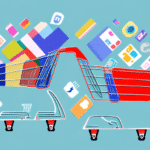Introduction to Mcommerce
The rise of mobile commerce, or mcommerce, has been one of the most significant trends in recent years. With the increasing use of smartphones and tablets for online shopping, businesses must adapt their strategies to stay competitive. This article delves into the world of mcommerce, exploring the challenges and opportunities it presents, and providing practical advice on optimizing mobile e-commerce strategies for sustained success in the ever-evolving landscape of online retail.
Growth Drivers of Mcommerce
Increasing Smartphone and Tablet Adoption
Mcommerce refers to any transaction conducted via a mobile device, including mobile-optimized websites, apps, and social media channels. According to the Pew Research Center, as of 2023, there are over 4 billion smartphone users worldwide, a number expected to continue growing. This widespread adoption is a primary driver of the mcommerce surge.
Advancements in Mobile Network Technology
The availability of high-speed mobile networks, particularly with the widespread deployment of 5G, has significantly enhanced the mcommerce experience. GSMA reports that by 2023, over 60% of the global population had access to 5G networks, facilitating faster load times and smoother transactions, thereby accelerating mcommerce adoption.
Consumer Convenience and Accessibility
Mcommerce offers unparalleled convenience, allowing consumers to shop from anywhere at any time with just a few taps on their mobile devices. This flexibility caters to the needs of busy consumers who prefer the ease of mobile shopping over visiting physical stores.
Access to New Markets
Mcommerce enables businesses to reach customers in previously untapped markets, including remote or rural areas where establishing physical stores may not be feasible. This expanded reach increases competition but also opens up significant growth opportunities in the global e-commerce space.
Benefits of Mcommerce
Enhanced Customer Experience
One of the key advantages of mcommerce is the ability to provide a personalized shopping experience. Utilizing data analytics and machine learning, retailers can offer tailored recommendations and promotions based on a customer's browsing and purchasing history, location, and preferences. This personalization not only improves the customer experience but also boosts the likelihood of repeat purchases and customer loyalty.
According to a Shopify report, personalized mcommerce experiences can increase conversion rates by up to 20%.
Valuable Customer Insights
Mcommerce allows businesses to gather valuable data on customer behavior and preferences. By tracking mobile interactions, companies can gain insights into popular products, effective marketing campaigns, and overall engagement with their brand. This data-driven approach enables informed business decisions and continuous performance improvement.
Convenience and Flexibility for Consumers
For consumers, mcommerce offers the convenience of instant access to a vast selection of products and services. Mobile devices have become essential tools for various activities, from booking travel to ordering food, making them the preferred platform for shopping.
Additionally, the ability to compare prices and products across multiple retailers on a single device leads to more informed purchasing decisions. Many mobile shopping apps also offer exclusive deals and discounts, further incentivizing consumers to shop via their mobile devices.
Challenges in Mcommerce
Keeping Up with Rapid Technological Changes
Mcommerce is a dynamic field with constantly evolving mobile technologies and user behaviors. As mobile devices become more advanced and consumers more tech-savvy, businesses must continuously innovate to keep pace.
Optimizing User Experience
Ensuring that mobile websites and apps are optimized for user experience is crucial. Limited screen sizes and varying device capabilities necessitate designs that offer fast-loading pages, easy navigation, and seamless checkout processes to prevent user frustration and cart abandonment.
Security Concerns
With the increase in mcommerce transactions, security risks have also risen. Cybercriminals target mobile platforms to steal sensitive information, making robust security measures essential. According to Symantec, mobile fraud attempts have increased by over 50% in the past year.
Regulatory Compliance
Businesses must navigate the evolving regulatory landscape surrounding mcommerce, including laws governing mobile payments and data privacy. Compliance with regulations like the GDPR and CCPA is essential to avoid legal repercussions and maintain consumer trust.
Optimizing Your Mobile E-commerce Strategy
Designing a Mobile-Friendly Website
- Responsive Design: Ensure your website adapts to all screen sizes for consistency across devices.
- Fast Load Times: Optimize website performance by minimizing graphics and plugins.
- Consistent Branding: Maintain uniform branding across all channels to build recognition and trust.
- Readable Fonts and Colors: Use legible fonts and high-contrast colors to enhance readability.
- Clear Calls-to-Action: Guide users with prominent buttons like "Buy Now" or "Add to Cart."
Streamlining the Checkout Process
- Simplicity: Keep the checkout process straightforward with minimal steps.
- Autofill Features: Enable users to quickly enter their information.
- Multiple Payment Options: Offer various payment methods, including mobile wallets.
- Saved Information: Allow users to save payment and shipping details for future purchases.
- Fast Loading Checkout Pages: Ensure checkout pages load quickly to prevent drop-offs.
Leveraging Social Media
- Platform Selection: Focus on social media channels most relevant to your target audience.
- Engaging Content: Create content that encourages sharing and interaction, such as videos and polls.
- Social Media Advertising: Use targeted ads to drive traffic to your mobile channels.
- Customer Engagement: Respond promptly to feedback and inquiries to build trust and loyalty.
Utilizing Mobile Apps
- User-Centric Design: Develop apps with intuitive interfaces and fast-loading pages.
- Push Notifications: Engage users with timely updates and offers.
- Exclusive Offers: Provide special deals for app users to encourage downloads and usage.
- Analytics: Monitor app usage to identify areas for improvement.
Implementing Mobile Payments
- Benefits: Mobile payments offer a convenient, secure, and fast checkout experience while reducing fraud and transaction costs through advanced encryption.
- Challenges: Not all customers may use mobile payments, and businesses may need to invest in new payment systems. Additionally, some customers may have security concerns about mobile payments.
Using Analytics to Improve Performance
- Mobile Traffic and Conversion Rates: Track user behavior and sales performance on mobile devices.
- Abandoned Cart Rates: Identify and address friction points in the checkout process.
- Engagement Metrics: Assess the effectiveness of mobile content and user experience.
- App Download and Usage Rates: Gauge the popularity and utility of your mobile applications.
- Mobile Payment Adoption Rates: Evaluate the acceptance and usage of various mobile payment methods.
Creating a Seamless Omnichannel Experience
- Integrated Channels: Ensure consistency in branding, messaging, and user experience across mobile, desktop, and physical stores.
- Personalization: Use data and analytics to deliver relevant content and recommendations across all channels.
- Accessible Customer Service: Offer multiple support touchpoints, such as live chat, email, and phone.
- Cross-Channel Marketing: Utilize integrated campaigns and consistent messaging to drive traffic and create a cohesive brand experience.
Emerging Trends in Mcommerce
Adoption of Augmented Reality (AR) and Virtual Reality (VR)
AR and VR technologies are enhancing the shopping experience by allowing customers to visualize products in real-time environments, leading to increased engagement and higher conversion rates.
Voice Commerce
The integration of voice assistants in mobile devices is simplifying the shopping process, enabling users to make purchases through voice commands.
AI and Machine Learning
Advanced AI and machine learning algorithms are driving personalization and predictive analytics, helping businesses anticipate customer needs and optimize their offerings accordingly.
Enhanced Mobile Security
With increasing security concerns, businesses are investing in advanced security measures like biometric authentication and blockchain technology to protect customer data and build trust.
Sustainable and Ethical Shopping
Consumers are increasingly valuing sustainability and ethical practices. Mobile platforms are leveraging this trend by highlighting eco-friendly products and transparent supply chains.
Conclusion: Embracing the Future of E-Commerce with Mobile-First Strategies
The rise of mcommerce has fundamentally transformed the e-commerce landscape, offering both significant opportunities and challenges for businesses. By adopting mobile-first strategies and continuously optimizing mobile channels, companies can provide personalized and convenient shopping experiences that meet customer demands. Staying abreast of emerging trends and leveraging data analytics will further enable businesses to maintain a competitive edge and achieve long-term success in the dynamic world of online retail.








